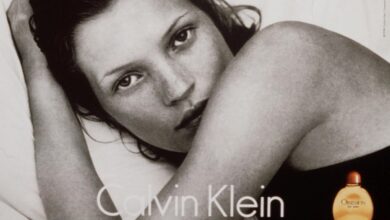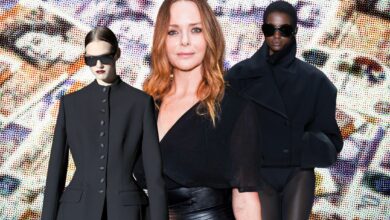Vivienne Westwood never stopped challenging the status quo

It is 1992 and a pioneering fashion designer has just been awarded an OBE by the Queen. She is standing outside Buckingham Palace, posing proudly in a grey skirt suit with platform heels. She does a celebratory twirl for the press – and inadvertently flashes them all. She isn’t wearing knickers. The woman is Dame Vivienne Westwood. Thirty years later, upon the news of Westwood’s death at the age of 81, a photograph of the scene has become one of the most circulated images on social media.
It’s a moment that captured so much of what the late fashion designer stood for. She was rebellious. She was liberated. Crucially, she was anti-establishment. All of this and more is what the fashion industry will remember as it mourns the loss of one of its most iconic talents, who passed away “peacefully” in London on Thursday. Westwood’s husband and business partner, Andreas Kronthaler, will continue to lead her namesake label.
The quintessential Westwood look is one that even the least fashion-conscious among us could instantly recognise. Stiff, sculptural corsetry. Outsized silhouettes designed to accentuate the female form rather than minimise it. And who could forget those enormous lace-up platform shoes that famously got the better of Naomi Campbell when she took a tumble on Westwood’s runway in 1993.
Of course, one of the aesthetics she was most revered for was punk. As one of the movement’s chief pioneers, Westwood defined the counter-culture’s sartorial identity, one safety pin at a time. Sold at SEX – the shop she founded with her partner at the time, Malcolm McLaren, on the King’s Road – were bondage trousers, rubber negligees, slogan T-shirts, and more. Soon she was dressing the Sex Pistols and sending her subversive designs down the runway to great acclaim.
Her first show in 1981, to debut the Pirate collection, was a major moment for punk and the fashion industry as we know it today. Models swaggered down the runway with swashbuckling suave in ruffled shirts, 18th-century suiting and double-breasted waistcoats. It was a collection that would go on to influence the fashion industry for millennia, with everyone from Alexander McQueen to John Galliano designing collections inspired by this same shipwrecked style.
By the 1990s, Westwood’s runways had become a stage on which history would be made. There was the Campbell fall, of course, but also Linda Evangelista in a bejewelled Queen of Sheba dress, Carla Bruni in a fake fur coat with matching underwear, and a topless Kate Moss in a micro mini skirt, eating an ice cream.
Such was Westwood’s cultural veneration that she became a reference point for transgressive fashion fans everywhere, including in film and TV. Consider Sex and the City’s Carrie Bradshaw, who, thanks to legendary costume designer Patricia Field, is still recognised as one of the screen’s most influential style stars, almost 20 years since the series ended. And so when Bradshaw decided to tie the knot to Mr Big in the 2008 film, naturally it was none other than Westwood whose design she selected. “A dress so special that it could bring a wedding tear from even the most unbelieving,” the character said of the seminal corseted gown.
As Westwood progressed through her career, though, her political drive began to catch up with that of her fashion. While she had always amalgamated the two in her work, by the mid-2000s the designer became a tireless campaigner, committing to everything from social justice and climate change to banning the sale of real fur. She also advocated anti-consumerism, despite obviously undermining her own business in the process. Her catwalks became political protests, opportunities to hold world leaders to account for inaction in the climate crisis. In February 2019, Westwood’s show saw actor and activist Rose McGowan speak about consumerism, while the executive director of Greenpeace, John Sauven, gave an address about the environmental consequences of oil plants. Hardly typical proceedings for a fashion show.
But “hardly typical” was Westwood’s entire raison d’etre, in work and in life. Instead of leaning into the hierarchies she so obviously could have endorsed, Westwood sought to dissolve them entirely, treating interns like executives and vice versa. As the industry mourns her loss, stories are flooding social media about the late designer’s friendly and fearless attitude, and how she remained unphased by so much of the pomp and pageantry that has come to define the contemporary fashion landscape.
Fashion photographer Mario Testino described her as “humble and funny”; Sex and the City’s Kim Cattrall recalled her “generosity and kindness”; Jamie Lee Curtis praised her for giving people “permission to be themselves and beyond themselves”.
Westwood was a marvel in every possible way that one could be. She will be sorely missed; her legacy will outlive us all.





